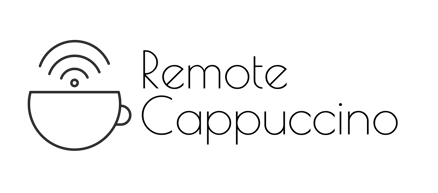The Rise of Third Wave Coffee: A Deep Dive Into the Coffee Revolution
Dive into the world of third wave coffee, a movement that’s transforming how we experience our daily brew. This blog post explores what sets third wave coffee apart, its emphasis on quality, craftsmanship, and sustainability, and how it contrasts with the second wave led by chains like Starbucks and PJ's Coffee. Learn about the origins of the third wave, the role of independent roasters, and why this approach is elevating coffee to an artisanal level. Whether you’re a coffee aficionado or a curious beginner, this guide will deepen your appreciation for the art and science behind your favorite cup.
1/11/20253 min read


Coffee has evolved dramatically over the centuries, transcending its utilitarian roots as a mere morning pick-me-up to become a cultural, artisanal, and culinary phenomenon. Today, we’re in the midst of the third wave coffee movement—a significant shift in how coffee is sourced, brewed, and appreciated. But what exactly is third wave coffee, and how does it differ from earlier movements like the second wave exemplified by Starbucks or PJ’s Coffee? Let’s take a closer look.
What Is Third Wave Coffee?
Third wave coffee is a movement that emphasizes coffee as an artisanal product, much like wine or craft beer. This wave prioritizes:
Quality: Meticulous attention to sourcing high-quality beans, often single-origin.
Traceability: A focus on transparency, with consumers being educated about where their coffee comes from, including details about the farm, processing methods, and environmental impact.
Craftsmanship: Coffee is treated as a craft, with an emphasis on precise brewing techniques, such as pour-over, AeroPress, and siphon brewing. Baristas often act as coffee sommeliers, guiding customers to the perfect brew.
Flavor: Instead of drowning coffee in syrups or milk, third wave coffee highlights the natural flavors of the beans, such as fruity, floral, or nutty notes.
This movement not only aims to elevate coffee but also to promote sustainable and ethical practices within the coffee industry.
When Did the Third Wave Begin?
The term "third wave coffee" was first coined in the early 2000s, but its roots trace back to the late 1990s. Pioneers like Counter Culture Coffee, Stumptown Coffee Roasters, and Blue Bottle Coffee started reimagining how coffee was sourced and brewed, introducing American audiences to the complexity and nuance of specialty coffee.
By the 2010s, third wave coffee had gained significant traction, supported by a growing community of coffee aficionados, barista competitions, and cafes dedicated to the craft.
How Does It Differ From the Second Wave?
To understand third wave coffee, it’s helpful to look back at the second wave.
The Second Wave: Starbucks, PJ’s Coffee, and Coffee Culture Goes Mainstream
The second wave, which began in the 1970s and peaked in the 1990s, was characterized by the rise of coffee chains like Starbucks, Peet’s Coffee, and PJ’s Coffee. This wave popularized coffee as an experience, not just a beverage, introducing terms like "latte" and "cappuccino" into mainstream vernacular.
Key characteristics of the second wave include:
Mass Market Appeal: Coffee became widely accessible through chains, with a focus on consistency and convenience.
Specialty Drinks: Sweetened and flavored beverages like caramel macchiatos and pumpkin spice lattes became cultural staples.
Dark Roasts: Chains often favored dark roasts, which sometimes masked the subtler flavors of the beans.
While the second wave played a critical role in democratizing coffee, it often prioritized speed and scalability over the artisanal approach.
Why Does Third Wave Coffee Matter?
Third wave coffee represents a significant cultural shift, pushing back against mass production and embracing individuality and sustainability. Here’s why it’s important:
Elevating Coffee’s Reputation: By showcasing the complexity of coffee flavors, the movement has transformed how people perceive the beverage, likening it to fine wine or gourmet chocolate.
Promoting Sustainability: Many third wave roasters work directly with farmers, ensuring fair wages and sustainable farming practices.
Encouraging Education: Consumers are now more informed about their coffee, from the origin to the brewing method, fostering a deeper appreciation.
Where Can You Experience Third Wave Coffee?
If you’re curious about third wave coffee, look for independent coffee roasters and cafes that prioritize quality and transparency. Some of the most notable names in the third wave movement include:
Intelligentsia Coffee
Stumptown Coffee Roasters
Blue Bottle Coffee
Counter Culture Coffee
These establishments often feature minimalist aesthetics, manual brewing techniques, and baristas who are eager to discuss the nuances of their offerings.
Is Third Wave Coffee the Future?
The third wave coffee movement shows no signs of slowing down. As consumers become more interested in sustainable practices, ethical sourcing, and the artistry behind their favorite cup, this approach to coffee is likely to expand further.
So, the next time you sip on a meticulously brewed pour-over, take a moment to appreciate the journey your coffee has taken—from the farm to your cup. Welcome to the third wave.


